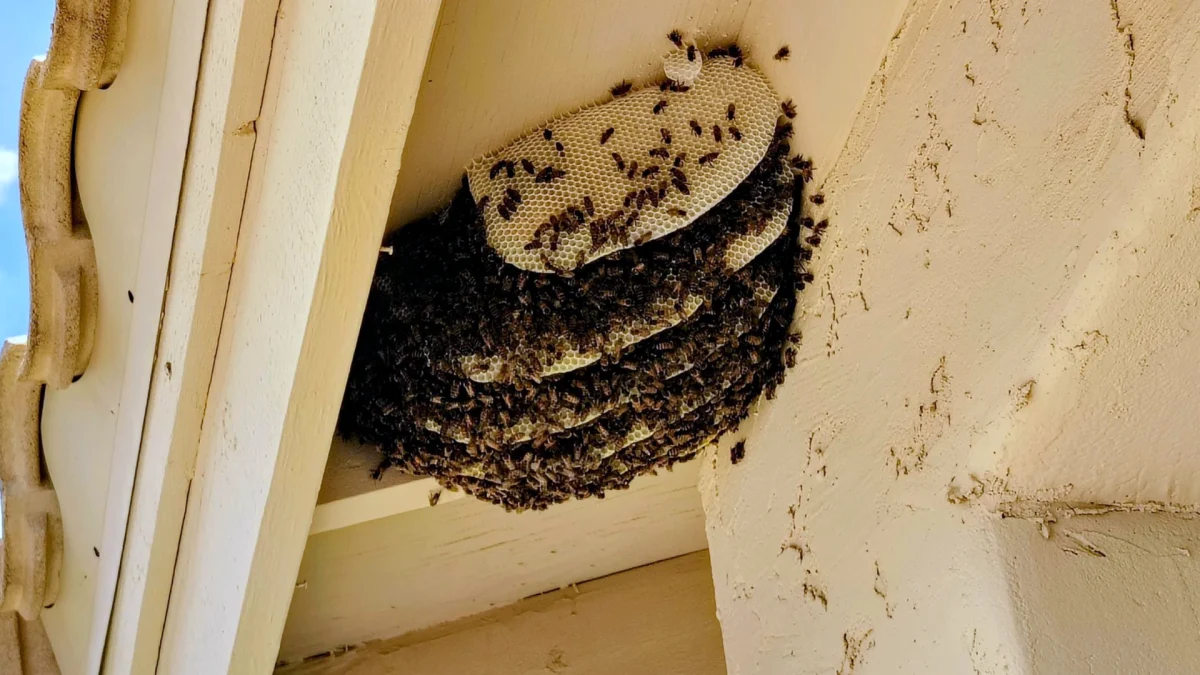Arizona constantly deals with bee activity due to warm weather and long sunny seasons. Also, such activity can be influenced by landscapes because of the presence of nectar and water. Bees support pollination and help local ecosystems, but they can be a safety concern when they build nests near homes. They can build hives on patios, roofs, block walls, trees, or utility boxes, increasing the risk of sudden encounters. These encounters can put families, pets, and neighbors at risk of painful stings. Many Arizona residents wonder if they can take care of hive removal on their own. However, this task demands more skill than what most homeowners may have. Professional control at greenmangopest.com keeps people safe and removes colonies fully. It also prevents new hives from forming in the same spot. Below are reasons only professionals should handle beehive control:
Stings Are Not the Only Concern
Bee stings hurt, and some individuals react with swelling or allergic symptoms. Africanized honey bees attack in higher numbers and pursue threats over long distances. A person who disturbs a hive may face dozens of stings within seconds. However, there are other concerns that bees may pose. Other concerns include swarms forming inside homes, structural damage from honey seepage, odors that attract other pests, and future colonies drawn to leftover hive material.
People often underestimate how large hives can grow in attics, wall voids, or storage sheds. Honey and wax melt in Arizona’s heat, which leads to dripping through insulation, drywall, or ceilings. This creates a mess and attracts ants and roaches. Also, this damages materials that require repairs even after the hive is gone.
Incorrect Removal Can Make the Problem Worse
Many homeowners use sprays, smoke, water hoses, or makeshift tools against bees. These methods trigger defensive behavior and fail to eliminate the entire hive. Incomplete removal leads to issues such as bees relocating to a tougher spot in the same structure, and honey left behind to melt and attract pests. Also, wax may draw new swarms during peak season, and remaining bees may regroup and rebuild. Removing a hive is never as simple as brushing away comb or applying a quick spray. Colonies contain thousands of bees, layers of wax, and several pounds of honey.
Professionals Understand Bee Behavior and Colony Structure
Professional bee handlers spend years studying bee behavior, hive development, and removal techniques. They identify bee species fast and determine how aggressive a colony might be. They always choose the safest strategy for removal.
Experts understand where queens hide, how workers respond to disturbance, and how to move or eliminate a colony with minimal risk to people nearby. This knowledge allows them to complete the job without sending the bees into defensive mode.
Professionals also use protective suits, specialized tools, and equipment designed for safe hive removal. They can work in tight spaces such as attics, roofs, and wall voids without exposing themselves to unnecessary danger.
Hive Removal Often Requires Structural Work
Many hives in Arizona end up inside walls, soffits, utility enclosures, and roof areas. Removing the bees is only one step. The hive material must be removed as well. If honeycomb stays inside the structure, it melts during summer heat and attracts ants, rodents, and other pests. Professionals can cut into walls safely, remove honeycomb without damage, and repair access points. Also, they can restore insulation and clean residues that attract pests.
Bees Are Protected, and Removal Must Follow Legal Standards
In many cases, bees fall under environmental protection rules. Laws vary across Arizona’s counties and cities, but improper removal may violate local guidelines. Professionals follow regulations and identify when relocation is possible. They make sure the process does not harm protected species.
Homeowners who try to remove hives without guidance may unintentionally destroy colonies that must be handled with care. Trained bee handlers understand which methods are permitted and which ones are not.
Why Beehive Control Should Be Left to the Pros in Arizona

